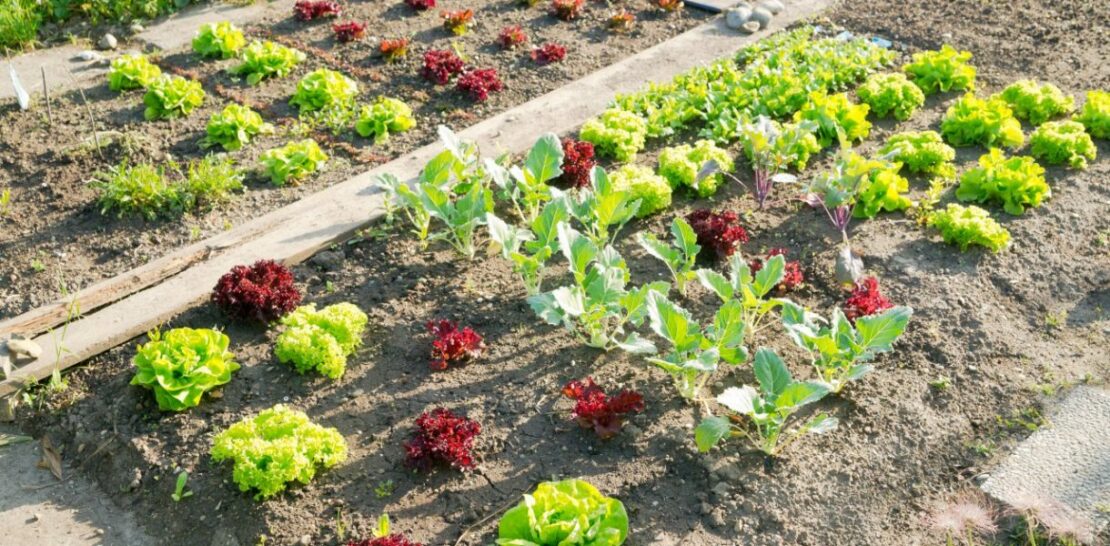As the global shift towards organic, sustainable food sources gains momentum, more and more people are discovering the joy and satisfaction of cultivating their own vegetable gardens.
With the right knowledge and techniques, even a small patch of land can be transformed into a thriving, productive sanctuary of fresh, healthy produce.
In this comprehensive article, we will explore expert gardening tips and strategies to help you create a successful vegetable garden this year.
From choosing the right location and soil preparation to selecting suitable plants, proper watering, and pest control, we will cover everything you need to know to achieve a bountiful harvest.
The Foundation of Success: Choosing the Right Location and Preparing Your Soil
One of the most critical factors in the success of any vegetable garden is the location and quality of the soil in which your plants are grown. In this section, we’ll discuss the importance of selecting the ideal site for your garden and the steps to take in preparing your soil for optimal plant growth.
Choosing the Right Location: To thrive, most vegetables require at least six hours of direct sunlight per day. When selecting the site for your garden, consider the sun’s path and the amount of shade cast by nearby structures and trees. Remember that the sun’s angle changes with the seasons, so a location that offers ample sunlight during the summer months may not be as suitable during the spring or fall.
Additionally, it’s essential to consider the drainage of your chosen location. While most vegetables require a steady supply of moisture, they do not fare well in waterlogged soil. Ideally, the site should have a gentle slope to facilitate proper drainage, or you may need to install raised beds or implement other strategies to ensure adequate drainage.
Preparing Your Soil: The next step in laying the foundation for a successful vegetable garden is preparing your soil. A fertile, well-drained soil rich in organic matter is essential for robust vegetable growth. Start by removing any debris, rocks, or weeds from your garden area. Then, take a soil sample for testing to determine its pH and nutrient levels. Most vegetables prefer a slightly acidic to neutral pH range of 6.0 to 7.0, and a soil test will guide you in amending your soil if necessary with lime or sulfur to achieve the desired pH levels.
- Adding Organic Matter: Incorporating organic matter, such as compost, aged manure, or leaf mold, into your soil will improve its texture, fertility, and water-holding capacity. Aim to add at least a 2- to 3-inch layer of organic material to your garden bed and work it into the top 6 to 8 inches of soil.
- Loosening Compacted Soil: Compacted soil can inhibit root growth and limit the availability of nutrients and water to your plants. Use a garden fork or tiller to break up any large clumps and create a loose, crumbly soil structure.
- Adding Fertilizers: Based on the results of your soil test, you may need to add specific nutrients to your soil to optimize plant growth. Granular, slow-release fertilizers are generally the most effective for vegetable gardens, as they provide a steady supply of nutrients over an extended period.
Plant Selection and Placement: Choosing the Right Vegetables for Your Garden and Maximizing Space
The next step in creating a thriving vegetable garden is selecting suitable plants and arranging them in a way that maximizes your space and resources.
- Choose Vegetables that Suit Your Climate and Growing Conditions: Some vegetables prefer cool temperatures, while others require warmer conditions to thrive. Research the specific needs of the plants you wish to grow and ensure that your garden site can meet those requirements. Also, consider the length of your growing season and select plant varieties that will have ample time to mature and produce a harvest.
- Consider the Size of Your Garden: Depending on the space you have available, you may need to prioritize which vegetables to grow. Some plants, such as tomatoes, peppers, and eggplants, can be grown vertically to save space, while others, like squash and melons, require ample room to spread out. Be realistic about the space you have and choose plants accordingly.
- Optimize Plant Spacing and Arrangement: Proper plant spacing and arrangement can significantly impact the productivity of your garden. Avoid overcrowding your plants, as this can lead to poor air circulation, increased disease pressure,and competition for nutrients and water. Instead, follow the recommended spacing guidelines for each plant variety. Additionally, consider using the square foot gardening method or other intensive planting techniques to maximize your growing space.
- Rotate Your Crops: Rotating your crops each year can help prevent the buildup of soilborne diseases and pests that target specific plant families. By changing the location of your vegetables within the garden, you can disrupt the life cycle of these pathogens and pests, resulting in a healthier, more productive garden.
Water Wisdom: Ensuring Proper Irrigation for a Flourishing Vegetable Garden
Water is a vital component of a successful vegetable garden, as it is necessary for the growth and development of your plants. In this section, we will discuss strategies for providing the appropriate amount of water to your garden and ensuring that your plants receive consistent, even moisture.
Monitor Soil Moisture: Regularly check the moisture content of your soil to ensure that it stays consistently moist but not waterlogged. You can do this by simply sticking your finger into the soil up to the second knuckle. If the soil feels dry at that depth, it’s time to water.
- Water Deeply and Infrequently: Rather than providing shallow, frequent waterings, aim to water your vegetable garden deeply and less often. This approach encourages the development of deep, robust root systems that can better withstand periods of drought and stress. Generally, aim for at least 1 inch of water per week, either through rainfall or irrigation.
- Use Efficient Irrigation Techniques: Drip irrigation or soaker hoses are more efficient and effective than overhead sprinklers, as they deliver water directly to the root zone, reducing water loss through evaporation and runoff. Additionally, these methods help keep the foliage dry, which can minimize the spread of foliar diseases.
- Mulch to Conserve Moisture: Applying a layer of organic mulch, such as straw, leaves, or shredded bark, around your plants can help conserve soil moisture, reduce evaporation, and minimize weed competition. Aim for a 2- to 4-inch layer of mulch around the base of your plants, taking care not to mound it up against the stems.
Protecting Your Bounty: Effective Pest and Disease Management Strategies
Even with the most diligent care, pests and diseases can threaten the health and productivity of your vegetable garden. In this section, we will explore strategies for preventing, identifying, and managing these common garden challenges.
Preventative Measures: Preventing pests and diseases from gaining a foothold in your garden is the most effective approach to managing these issues. Implementing practices such as crop rotation, proper plant spacing, and the use of disease-resistant plant varieties can help create a less hospitable environment for pests and pathogens.
Scouting and Early Detection: Regularly inspect your vegetable plants for signs of pests or disease, such as holes in the leaves, discolored foliage, or unusual growth patterns. Catching these issues early can make treatment more effective and help prevent their spread.
- Mechanical and Cultural Controls: Many pests can be managed through mechanical means, such as hand-picking, using traps and barriers, or simply knocking them off plants with a strong spray of water. Cultural controls, such as removing diseased plant material and practicing good garden hygiene, can also help manage pests and diseases.
- Biological Controls: Introducing beneficial insects, such as ladybugs or lacewings, to your garden can provide natural, ongoing control of many common pests. Additionally, certain microbial and fungal products can be applied to the soil or foliage to help manage specific diseases.
- Chemical Controls: If all else fails, carefully targeted applications of chemical pesticides or fungicides may be necessary to manage severe pest or disease infestations. Always follow label instructions and use these products judiciously, as they can also harm beneficial organisms and disrupt the natural balance of your garden ecosystem.
In conclusion, a successful vegetable garden requires careful planning, attentive care, and the implementation of proven strategies to promote healthy plant growth and manage potential challenges. By selecting the right location, preparing your soil, choosing suitable plants, providing proper irrigation, and employing effective pest and disease management techniques, you can create a bountiful, productive vegetable garden this year. Armed with these expert tips and a commitment to nurturing your garden, you can experience the joy and satisfaction of harvesting yourown fresh, healthy produce throughout the growing season. The benefits of a thriving vegetable garden extend beyond the delicious, nutritious food it provides, as it also fosters a sense of accomplishment, connection to the earth, and the joy of sharing the fruits of your labor with family and friends. Happy gardening!




